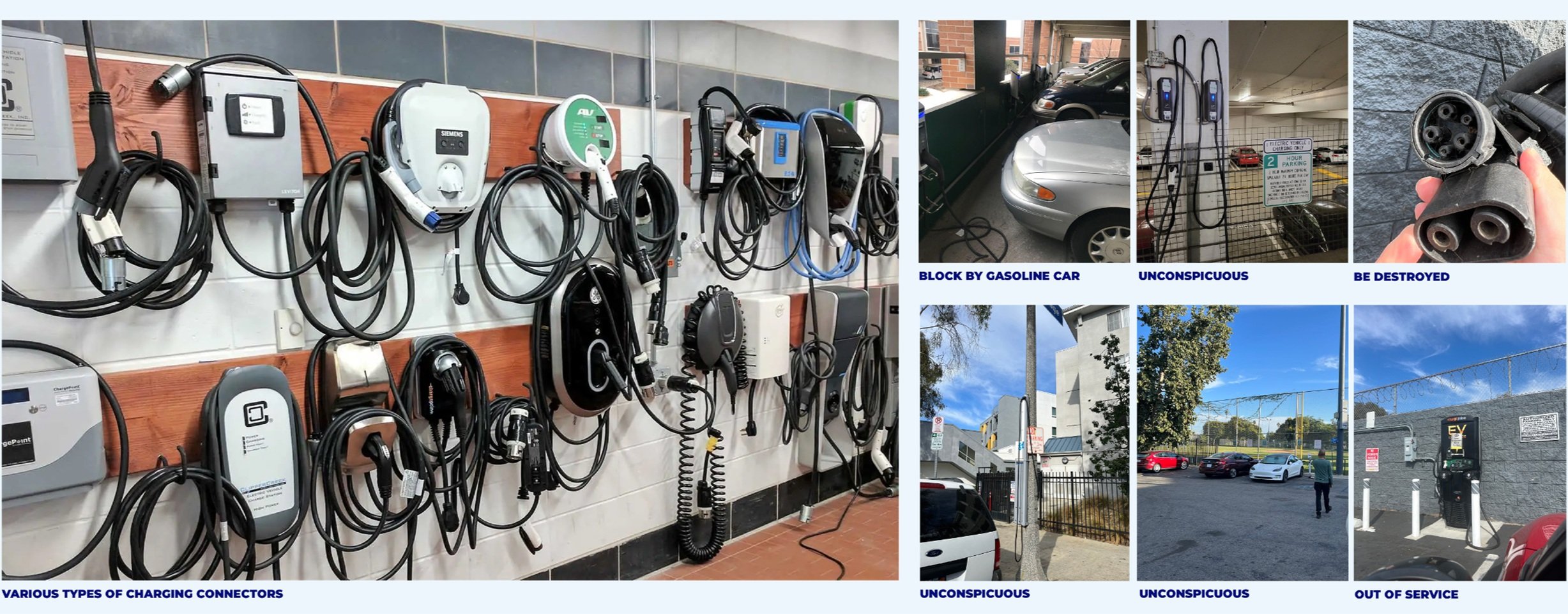Wal-EV CHARGING STATION
Project Intro:
Equality has always been a shared aspiration, including equality in access to electricity. However, in Los Angeles, inequalities persist, particularly in the uneven distribution of chargers. Unlike gas stations, charging infrastructure is not conveniently accessible to everyone at all times. The core goal of this project is to promote charging equality, ensuring that everyone can enjoy convenient and accessible services.
Project Type:
Strategy, Product design, High fidelity
Work time:
Jan. 2024— Apr. 2024
Team or Individual:
Individual work

PROBLEM
In late 2023, we visited Compton to investigate energy inequality across Los Angeles. Compared to nearby areas like Pasadena, Compton’s EV infrastructure was fragmented, hard to find, and often out of service. Most chargers were isolated Level 2 units—poorly marked, rarely maintained, and lacking visibility.
Beyond infrastructure, deeper issues emerged: low household income, limited access to home charging (especially for renters), and a cautious attitude toward EVs due to affordability concerns. Public charging is often the only option—but it’s slow, scarce, and far from home.
SOLUTION
Wal-EV is a low-cost Level 2 outlet system designed to address charging inequality by placing durable, socket-based units in underused community plazas. These locations are easy to access, familiar to residents, and well-integrated into daily routines—bringing charging closer to where people live, shop, and spend time.
By partnering with Walmart, each Wal-EV station doubles as a pickup point for online orders. This drastically reduces last-mile delivery costs and minimizes the need for additional staff. The savings are converted into charging credits, giving users affordable access to energy while encouraging them to shop through the Walmart app.
For residents, this means cheaper charging, fewer detours, and a new, integrated lifestyle that blends errands, energy, and affordability.
For Walmart, it builds deeper local presence, enhances user loyalty, and transforms charging infrastructure into a retail growth engine.











